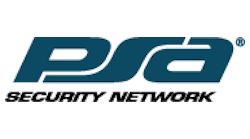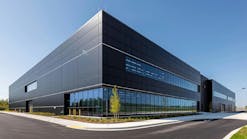This article originally appeared in the June 2022 issue of Security Business magazine. When sharing, don’t forget to mention Security Business magazine on LinkedIn and @SecBusinessMag on Twitter.
The pandemic has wrought so much change on the systems integration business that it is essential to take stock of these seismic shifts and begin to understand what is temporary and what is here to stay.
For starters, weathering all the COVID upheaval these past couple of years has illuminated a strong need to be strategically flexible in all aspects of running an integration business, both internally and customer-facing. Here are five key organizational areas that security integrators must navigate as they strategize for near- and long-term success:
1. Supply chain: A confluence of headwinds continues to disrupt manufacturing and distribution networks, resulting in a change in buying habits as products remain unavailable or in short supply. Customers are willing to use “non-standard” products they have never deployed in their facilities – but now they are readily available to be used in place of standard items that remain unavailable or in limbo.
Here is a prime case for flexibility. Integrators need to offer products/solutions that may be different now than before the pandemic, such as cloud-based solutions.
2. Terms of the deal: With almost monthly price increases levied by manufacturers, project quotes are often only valid for a week – or less. It is vital to maintain open lines of communication with end-users to assuage any frustration they may harbor. Pricing pressure has some integrators now requesting deposits or higher deposits upon signature to help with cashflow. Some manufacturers are even putting in “no cancellation” clauses on orders. This could leave an integrator in a financial bind if that is not covered in their “terms and conditions” statement. Fortunately, we find that end-users are mostly understanding and recognize that price increases can be expected.
Also impacting fiscal consideration, integrators frequently sit on inventory for six months or longer to assemble all necessary parts before deployment can begin. The real variable here is customer willingness to pay more if the price changes post sale as costs of equipment, labor and shipping escalate.
3. Work environment: One of the pandemic’s biggest impacts has been the transition from an office-centric culture to adapting to various ways of working. Like much of the business world, integrators were suddenly forced to execute an effective remote-work strategy. Today, post-pandemic working models remain largely in flux. For integrators, the challenge is efficiently managing workers that must be onsite (ex: warehouse staff) as opposed to others who can work remotely. Some technicians straddle working on the front lines from their home base.
It is widely believed the rise in the number of remote workers is here to stay. Consequently, there will be continued emphasis on successfully replicating face-to-face meetings, virtually, and the customer’s office environment will need to be upgraded for this new hybrid environment. For some businesses, this will necessitate investing in infrastructure to ensure positive working experiences.
4. Company culture: Forming and implementing a post-pandemic working model will directly impact your company culture in ways that may not be obvious until the process fully plays out. An emphasis must be placed on implementing strong communication procedures and developing trust among remote team members. The right policies and procedures will be necessary to overcome obstacles not faced before, such as effectively onboarding off-site employees who never come to an office.
There is also the issue of ensuring your remote staff members gain a sense of connection to the company and the ability to build bonds with each other. As integrators become accustomed to remote work, owners and managers must adopt solutions that promote collaboration, reduce miscommunication, and nurture a workplace structure for employees.
Recruiting and retention: The most astute integrators are adapting to post-pandemic workplace challenges by finding new ways to highlight their company culture as the centerpiece of a recruitment/retention strategy.
PSA is working with industry associations including SIA, NSCA & ESA to partner on talent recruitment, training and placement. This is imperative for our industry to remain viable long into the future.
Matt Barnette is CEO of PSA Security Network. Request more info about PSA at www.securityinfowatch.com/10214742.




